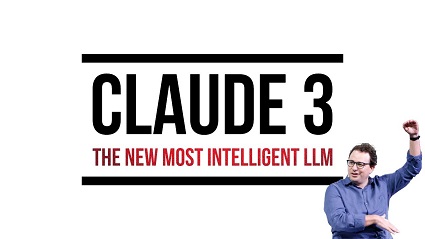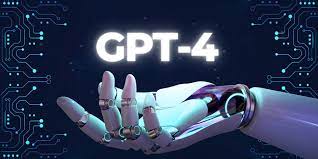An In-Depth Evaluation of Memory Capacities in Claude3 and GPT4
In the ever-evolving digital landscape, Artificial Intelligence (AI) stands out as a revolutionary force. Among the numerous AI models vying for dominance, Claude3 and GPT4 have emerged as frontrunners, pushing the boundaries of AI capabilities. This comprehensive analysis delves into the Claude3 vs GPT4 debate, dissecting their strengths, weaknesses, and potential applications. By the end, you'll gain a clear understanding of these AI powerhouses and their impact on the future of AI.
Catalogs:
Part 1. Unveiling the Champions: Claude3 vs GPT-4
1. What is Claude3?
Claude3 is a cutting-edge large language model (LLM) making waves in the AI world. LLMs are essentially powerful algorithms trained on massive amounts of text data, allowing them to generate text, translate languages, write different kinds of creative content, and answer your questions in an informative way. Claude3 stands out for its impressive computational abilities and effectiveness in tasks requiring reasoning and problem-solving. It excels at analyzing complex data and identifying patterns, making it a potential game-changer in fields like scientific research and financial modeling.

2. What is GPT-4?
Another major player in the LLM arena is GPT-4. Similar to Claude3, it's a powerful AI model trained on a vast dataset of text and code. However, GPT-4's primary focus lies in natural language processing (NLP) tasks. It excels at understanding human language nuances and generating human-quality text formats, making it a valuable tool for creative writing, marketing copy generation, and chatbot development.

Part 2. Deep Dive into the Arena: Claude3 vs GPT4
While both Claude3 and GPT-4 are LLMs pushing the boundaries of AI, they have distinct strengths and limitations:
1. Claude3 vs GPT4: Key Strengths Breakdown
1.1 Claude3 Functions:
- Reasoning and Problem-Solving:
Claude3 shines in tasks requiring logical deduction and critical thinking. Imagine being stuck on a complex math equation or a tricky logic puzzle. Claude3 can analyze the problem, identify patterns, and potentially guide you toward a solution. It can also excel in tasks like game playing and strategic planning, where reasoning and logical analysis are crucial.
- Complex Data Analysis:
Claude3's strength lies in its ability to sift through massive datasets, identify trends and relationships, and uncover hidden insights. This makes it a valuable tool in fields like scientific research, finance, and market analysis. For instance, Claude3 could analyze historical stock market data to predict future trends or help researchers identify patterns in complex biological datasets.
1.2 GPT-4 Functions:
- Creative Text Generation:
GPT-4 is a master of crafting human-quality text formats. Need a poem for a special occasion or a catchy tagline for your new product? GPT-4 can generate different creative text formats like poems, code, scripts, musical pieces, emails, letters, etc. It can tailor its writing style to different audiences and purposes, making it a powerful tool for marketing, content creation, and even education.
- Natural Language Understanding:
GPT-4 excels at understanding the nuances of human language. It can analyze the context of a conversation, identify sarcasm or humor, and generate responses that are both relevant and engaging. This makes GPT-4 ideal for tasks like chatbot development, sentiment analysis, and machine translation. Imagine having a conversation with a chatbot that truly understands your questions and responds in a natural, human-like way. That's the potential of GPT-4's natural language processing capabilities.
2. Claude3 vs GPT4: Accessibility Battleground
- Claude3:
As of now, Claude3 is likely in the late stages of development, with limited access for public use. Anthropic, the company behind Claude3, might prioritize offering access to researchers and specific partner organizations initially.
- GPT-4:
GPT-4 might be more readily available through OpenAI's platform. However, access might depend on factors like the specific use case and the pricing tier you choose. OpenAI might offer free tiers for research purposes with limited functionalities, while higher tiers with more features could come at a cost.
3. Claude3 vs GPT4: Memory Matchup
This section dives into "Context Length," which refers to the amount of information each model can consider when responding. A longer context length allows the model to understand the conversation history and provide more relevant and coherent responses.
- Claude3:
Due to its focus on reasoning and complex tasks, Claude3 might excel at understanding complex contexts. Imagine having a long and detailed conversation about a specific scientific theory. Claude3, with its potentially superior context length, could keep track of all the information discussed and provide insightful responses that build upon the conversation flow.
- GPT-4:
Context length refers to the amount of information a large language model like GPT-4 can consider when generating a response. This includes the current prompt or question, as well as the preceding conversation history. A longer context length allows GPT-4 to understand the nuances of a conversation and provide more relevant and coherent responses.
4. Claude3 vs GPT4: Price Showdown
Pricing information for both models might not be readily available yet, especially for Claude3 which is still under development.
- Claude3 Pricing:
The pricing structure for Claude3 is yet to be revealed by Anthropic. It's possible they might offer different tiers with varying functionalities, similar to other AI models.
- GPT-4 Pricing:
OpenAI might offer GPT-4 with different pricing tiers depending on usage and features. Some research purposes might have free access options with limited capabilities, while higher tiers with more advanced features could come at a cost.

5. Claude3 vs GPT4: Pros and Cons
Pros and Cons of Claude3
- Pros:
Powerful reasoning and problem-solving capabilities, potentially adept at handling complex data and understanding long contexts.
- Cons:
Limited public access at this stage, pricing structure unknown.
Pros and Cons of GPT-4
- Pros:
Excellent natural language processing, excels at creative text generation, and understanding human language nuances.
- Cons:
Might not be as strong in complex reasoning tasks compared to Claude3, access might depend on usage and pricing tiers.
Conclusion
Claude3 and GPT-4 represent the cutting-edge large language models, each with unique strengths that can revolutionize various fields. As these models continue to evolve and become more accessible, understanding their capabilities will be crucial for navigating the future shaped by AI.

